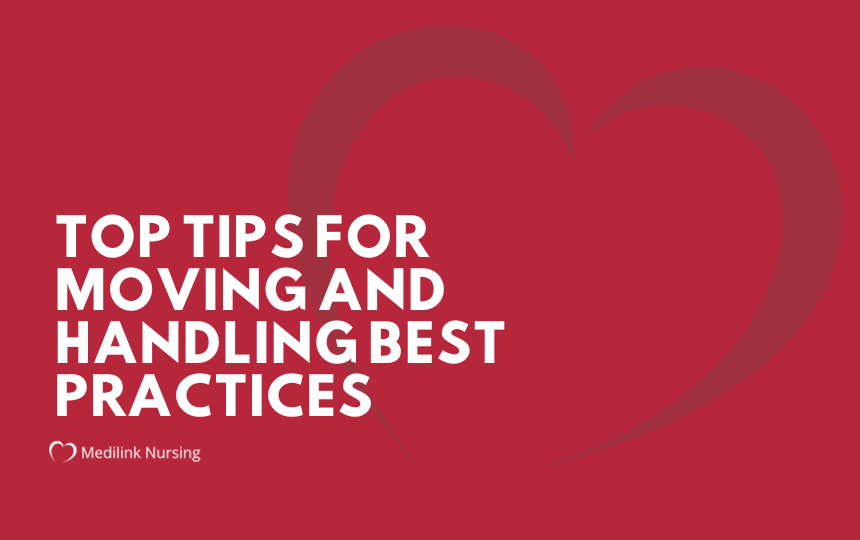Introduction: Moving And Handling Best Practices
In the healthcare industry, manual handling of patients poses significant risks to both the healthcare worker and the patient. Employers have a legal duty to protect their staff from the potential injuries that may arise from hazardous manual handling practices.
To mitigate these risks, it is crucial to prioritise safety through the adoption of moving and handling best practices and the use of specialised equipment.

Avoid Routine Manual Lifting:
Employers should emphasise that no one should routinely manually lift patients. This precaution is vital, as manual lifting can jeopardise the safety of both the patient and the healthcare worker. Instead, substitute manual lifting with the use of hoists, sliding aids, electric profiling beds, and other specialised equipment for moving and handling best practices.
Limit Manual Handling Involving Patient’s Weight:
Manual lifting should only be considered in cases that do not involve lifting most or all of a patient’s weight. Traditional lifting techniques, such as the shoulder or Australian lift, should be ruled out to prevent unnecessary risks.
Reasons to Avoid Manual Lifting:
Manual lifting poses potential risks to patients and healthcare workers alike. Improper support during lifting can lead to patient falls and injuries. Additionally, healthcare workers may experience strain on the back, neck, and shoulders, increasing the likelihood of musculoskeletal disorders.

Guidelines from Health and Safety Authorities:
The Health and Safety Executive (HSE) and HSE Northern Ireland (HSENI) advocate a balanced approach to managing risks associated with patient handling. This approach includes:
- Healthcare workers not performing tasks that unreasonably risk their well-being and that of their clients.
- Respecting clients’ personal wishes on mobility.
- Supporting clients’ independence and autonomy as fully as possible.
Consequences of Poor Moving and Handling Practices:
Poor moving and handling practices can result in:
- Back pain and musculoskeletal disorders, affecting the ability to work.
- Moving and handling accidents, causing injuries to both the patient and the healthcare employee.
- Discomfort and a lack of dignity for the person being moved.
- The CQC can prosecute for a breach of regulations
Reducing the Risk of Injury:
To reduce the risk of injury from manual handling, healthcare workers should:
- Use mechanical aids whenever possible.
- Assess the risk of each manual handling task before execution.
- Employ safe lifting techniques.
- Take regular breaks to prevent fatigue.
Additional Tips for Safe Patient Handling:
- Always ask for help when needed.
- Use your legs, not your back, when lifting.
- Maintain a straight back and bent knees.
- Avoid twisting or turning your body.
- Wear supportive footwear.
- Take regular breaks to stretch and rest.

Conclusion: Moving And Handling Best Practices
While there are situations where manual lifting is unavoidable, it is crucial to take all possible precautions to minimise the risk of injury and be aware of moving and handling best practices. By adhering to these top tips and incorporating best practices, healthcare workers can ensure the safety of both themselves and their patients during the moving and handling process. Prioritising safety aligns with legal obligations and promotes a culture of care and well-being in healthcare settings.
Here at Medilink Nursing, all of our agency staff have yearly refresher training courses on Moving and Handling as well as other mandatory subjects such as infection control, safeguarding adults at risk and many more. Our training courses are also available to purchase for use with your own staff. Get in touch to find out more on 0113 877 6383 or via the buttons below.
Further Reading:
If you found our article about moving and handling best practices useful, you might enjoy reading our posts on:
How To Choose a Healthcare Agency
Agency Shift Staff vs. Permanent Staff: Finding the Right Balance
Looking For Healthcare Recruitment Agencies?

